When we moved to Ireland we had a wish to be self-sufficient. That, of course, is a pipe dream these days. However, we did intend to be as self-sufficient as we could: grow our own veg, keep sheep and pigs and chickens, and, where possible, barter…
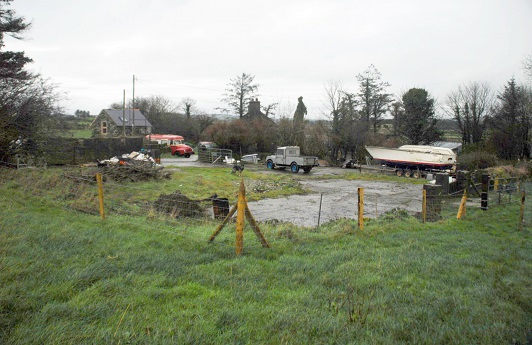
This yard was once a ‘small’ farmer’s milking yard. It had a parlour in which a dozen or so cows could be milked. A tree took down the parlour over fifty years ago, leaving just one wall along the roadside. This was our vision of what the yard would look like, eventually. Aside from the polytunnel ending up at 90 degrees from the image, we pretty much achieved this goal.
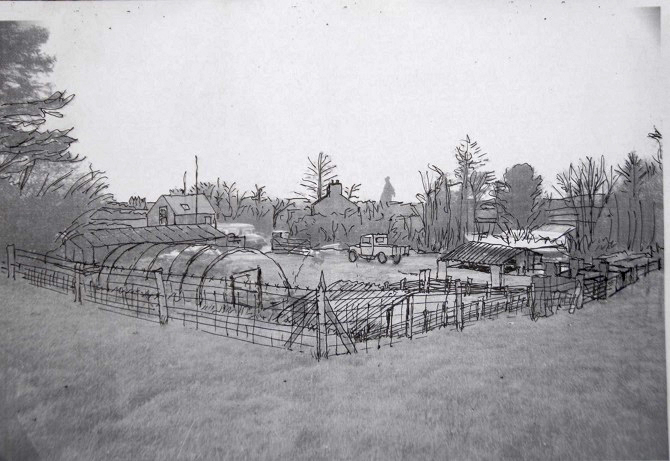
Of course, we inherited piles of old farm refuse, in the yard and around the house…

Some of which, like the trailer and some tractor utilities, were hastily removed by the farmer, when we made noises about getting in a scrap merchant – which we did in the end. We were pleased that all the scrap was gone, and didn’t learn until years later that the farmer down the road took payment for the metal, which wasn’t even his!

And, of course, once people realised we had space, more stuff turned up; only temporarily, apparently. We didn’t like to say no, but we were moving this boat and a caravan around for a few years before we finally persuaded the owners to remove them. The pigsty was build where the boat is located.
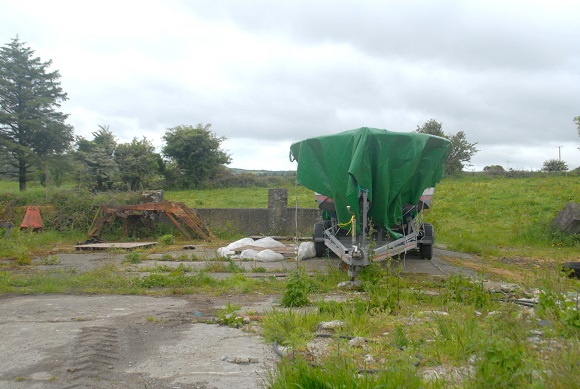
This is the first half of the pigsty, created so that we could get our first breeding sow installed…
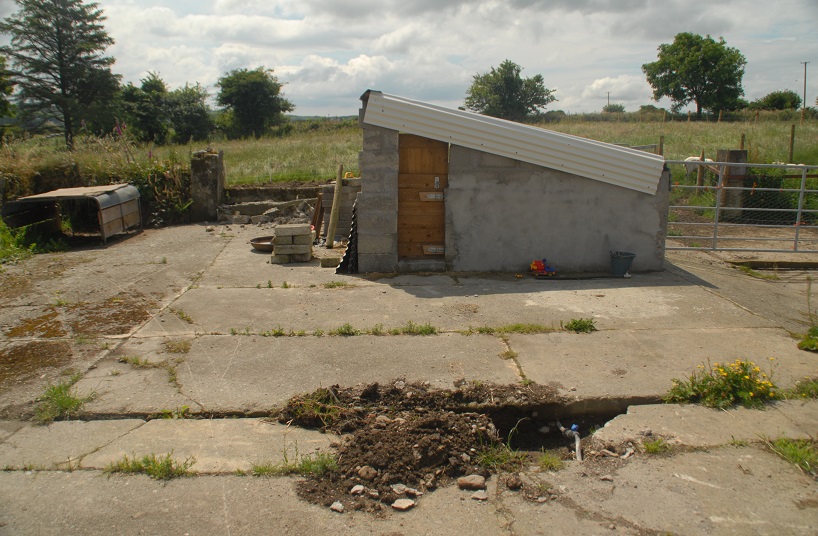
And the chicken run was built to the left of the pigsty. The chicken run story can be found here (click)

The polytunnel was secondhand, so we had to go and dismantle it, and bring it home. This was an exciting moment for me, as Ireland has a short growing season, and it meant we could make better use of the garden, by starting off trays of vegetables ready for planting out.
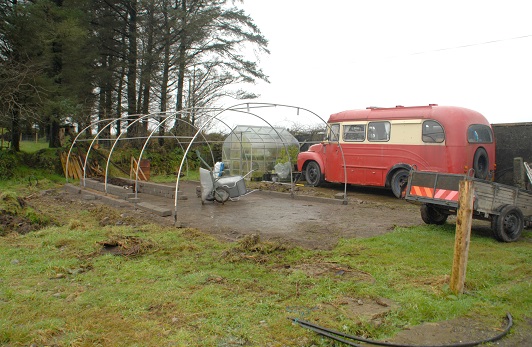
As the yard is concrete and rubble, we created raised beds inside the polytunnel.

And as well as bringing on vegetables to plant out, we grew grapes to arch over near the entrance, and eventually brought in a wicker seat so that we could enjoy the warmth and sunshine on cold days.
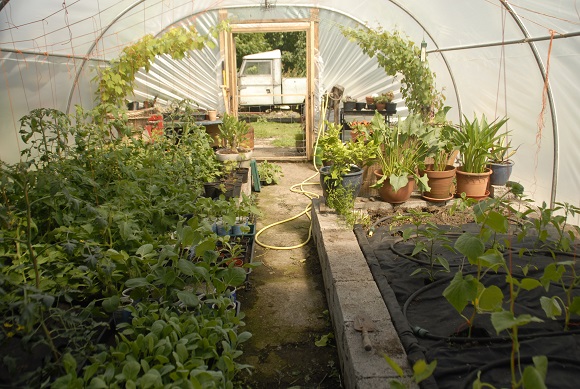
A second polytunnel is destined for this space, one day, but initially, a few old scaffolding boards were utilised to make raised beds.

This corner was destined to be our sheep shed. There is actually a drop from the field to the yard below, which has been filled with a pile of manure.

Once the area was cleared, the far bank was reinforced with stone and bits of concrete that were lying around.
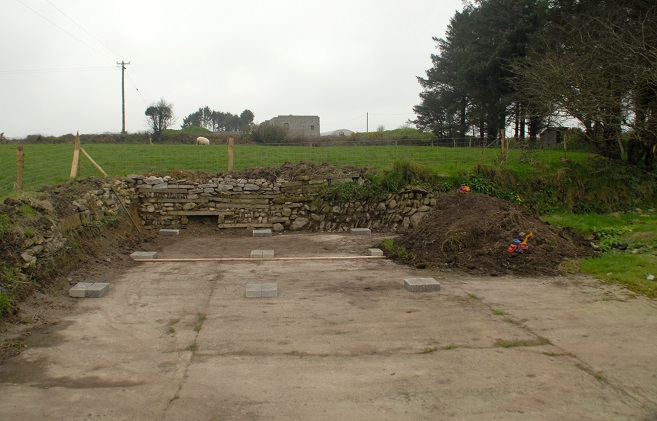
We marked out the spots for the posts (old telegraph poles), and of course, one of the holes was right over a massive field stone which had to be levered out.

Then, winter coming on, and lambs on the way, we had to get moving. The small pen inside is for the lambs, so that we could start to feed them solid food without the mothers snaffling all the pellets.
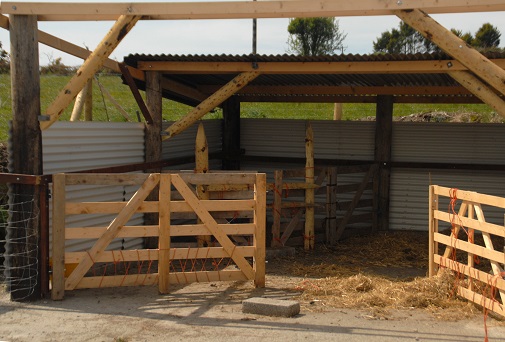
We chose a hardy breed, Scottish Blackface, who seemed to get on well with the wild-boar bonhams (piglets). Or, rather, they happily ignored each other.

The following image was taken from the scaffolding, which was raised in order to repair the chimney on the house. From here, the finished pigsty is visible, and the woodshed, which utilised the sole remaining wall of the old milking parlour.

From the first image to the last probably covers a few years, but working a place like this is an ever moving target, so there is never a point at which the job is ‘finished’.